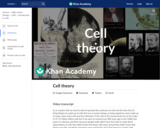
Introduction to cell theory. Roles of Hooke, Leeuwenhoek and others in its development.
- Subject:
- Biology
- Life Science
- Material Type:
- Lesson
- Provider:
- Khan Academy
- Provider Set:
- Khan Academy
- Author:
- Sal Khan
- Date Added:
- 07/21/2015

Introduction to cell theory. Roles of Hooke, Leeuwenhoek and others in its development.
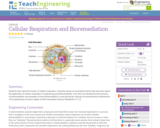
In this lesson, students learn about the basics of cellular respiration. They also learn about the application of cellular respiration to engineering and bioremediation. And, students are introduced to the process of bioremediation and several examples of how bioremediation is used during the cleanup of environmental contaminants.
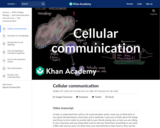
Overview of Cellular Communication.
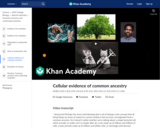
What cellular evidence do we have to construct evolutionary trees and believe that all life on Earth shares a common ancestry?
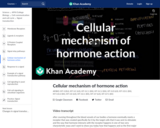
Learn about the interaction between chemical messages and their target cells in this video about hormone action.
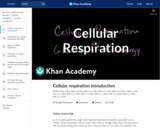
Introduction to cellular respiration, including glycolysis, the Krebs Cycle, and the electron transport chain. Created by Sal Khan.
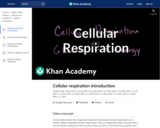
Introduction to cellular respiration, including glycolysis, the Krebs Cycle, and the electron transport chain. Created by Sal Khan.
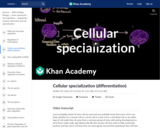
Introduction to Cellular specialization.

This video-enhanced lesson will challenge students to design and conduct scientifically valid experiments to evaluate hypotheses regarding an animal's expected behavior in response to changes in its environment. (Grades 9-12)
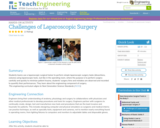
Students teams use a laparoscopic surgical trainer to perform simple laparoscopic surgery tasks (dissections, sutures) using laparoscopic tools. Just like in the operating room, where the purpose is to perform surgery carefully and quickly to minimize patient trauma, students' surgery time and mistakes are observed and recorded to quantify their performances. They learn about the engineering component of surgery.

In this video adapted from the Arctic Athabaskan Council, learn how warmer temperatures in the Arctic are transforming the landscape, triggering a host of effects such as permafrost thawing and insect infestations.

In this video segment adapted from NOVA, scientists are on the hunt for tornadoes. Using Doppler radar, they gather data in the hopes of solving the mystery of how tornadoes form.

In this video produced for Teachers' Domain, learn about MIT professor Cathy Drennan's research into microorganisms that remove carbon dioxide, a greenhouse gas, from the atmosphere.

In this interview filmed for Evolution: "Darwin's Dangerous Idea," biologist Chris Schneider discusses the relationship between conservation and speciation.
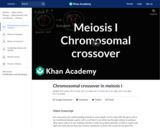
How homologous chromosomes exchange fragments in prophase I. Tetrads, chiasmata, and alleles.

This resource is intended for an introductory or intermediate-level college genetics course. It begins with an exploration of DNA and genome structure and continues with a study of the molecular mechanisms that drive gene expression. Concepts of classical transmission genetics are linked to the molecular mechanisms that underlie observable phenotypes. It concludes with specific topics that synthesize information from both molecular and transmission genetics, including consideration of topics like epigenetics, cancer biology, and evolution. Examples of both historical and current problems in genetics are presented, along with conversations of the relationship between genetics and society.

Overview of DNA transcription, translation, and replication during mitosis and meiosis. Learn about chromosomes, chromatids, and chromatin.
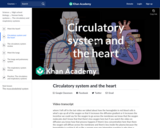
Introduction to the circulatory system and the heart.
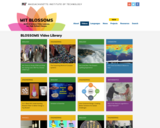
The topic of this video module is how to classify animals based on how closely related they are. The main learning objective is that students will learn how to make phylogenetic trees based on both physical characteristics and on DNA sequence. Students will also learn why the objective and quantitative nature of DNA sequencing is preferable when it come to classifying animals based on how closely related they are. Knowledge prerequisites to this lesson include that students have some understanding of what DNA is and that they have a familiarity with the base-pairing rules and with writing a DNA sequence.

Students are challenged to design a method for separating steel from aluminum based on magnetic properties as is frequently done in recycling operations. To complicate the challenge, the magnet used to separate the steel must be able to be switched off to allow for the recollection of the steel. Students must ultimately design, test, and present an effective electromagnet.